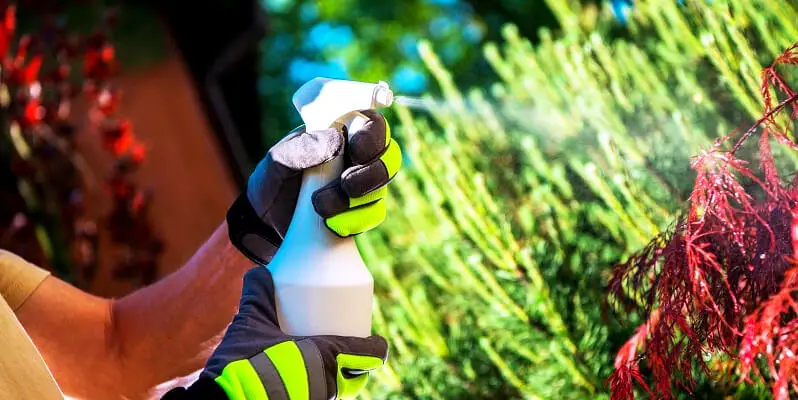Bifenthrin Vs Imidacloprid Insecticide

Pest management is essential in agriculture, forestry, and residential settings. Chemical pest control has been at the forefront of this management, with various products available to tackle different pests. Two commonly used chemicals for this purpose are bifenthrin and imidacloprid.
Bifenthrin vs Imidacloprid
This table of comparison will provide a quick understanding of the differences between the options.
| Feature | Bifenthrin | Imidacloprid |
|---|---|---|
| Chemical Classification | Synthetic pyrethroid | Neonicotinoid |
| Mode of Action | Affects sodium channels | Agonist to nAChRs |
| Target Pests | Termites, fleas, spiders, garden pests | Aphids, whiteflies, beetles, fleas, termites |
| Environmental Impact | Toxic to aquatic life | Toxic to bees and aquatic life |
| Health Impact | Low toxicity to mammals | Low toxicity when used as directed |
| Application Forms | Granules, sprays, liquid | Seed treatments, soil drenches, sprays, pet treatments |
Chemical Classification
Bifenthrin is a synthetic pyrethroid insecticide. Pyrethroids are man-made versions of pyrethrins, which come from chrysanthemum flowers. They are designed to have improved stability in sunlight.
Imidacloprid belongs to the neonicotinoid class of insecticides, and imidacloprid is a synthetic compound modeled after nicotine, a natural insect deterrent found in the tobacco plant.
Mode of Action
Bifenthrin affects the nervous system of insects. It interferes with the normal transmission of nerve impulses by acting on the sodium channels of nerve cells. This results in paralysis and eventual death of the pest.
As a neonicotinoid, imidacloprid acts as an agonist to the nicotinic acetylcholine receptors (nAChRs) in the nervous system. By binding to these receptors, it disrupts the standard transmission of nerve signals, leading to paralysis and death of the insect.

Target Pests
Bifenthrin is effective against a broad range of pests, including termites, fleas, ticks, spiders, and various garden pests. It is often used in both agriculture and residential pest control applications.
On the other hand, Imidacloprid is mainly used against pests that suck sap from plants such as aphids, whiteflies, and certain beetles. Additionally, it’s used in products that protect pets from fleas and properties from termites.
Environmental Impacts
Bifenthrin is highly toxic to aquatic organisms, so it’s crucial to prevent its entry into water bodies. Although its toxicity to mammals is relatively low, it can still be harmful when ingested, inhaled, or absorbed through the skin.
Imidacloprid has arisen about its potential impact on pollinators, primarily bees. Some studies suggest it can impair their foraging behavior and reproductive success. Like bifenthrin, it can also be toxic to aquatic life. Regarding human exposure, imidacloprid has low toxicity when used according to label directions.

Use
Bifenthrin is found in granules, sprays, and liquid forms. When applying, following label instructions closely and avoiding using near water sources is crucial. Its residual effect can last several weeks, ensuring prolonged protection against pests.
Imidacloprid is available in various formulations, including seed treatments, soil drenches, and foliar sprays. Its systemic nature means plants absorb it and protects them from the inside out. In residential settings, it’s also found in pet flea treatments.
List of Product That Contains Bifenthrin
Bifenthrin is a synthetic pyrethroid insecticide used in a variety of applications, from agriculture to residential pest control.
Agricultural Products
-
- Brigade
- Capture
- Bifenture
- Discipline
- Fanfare
Turf and Ornamental Products
-
- Talstar (available in various forms like Talstar P, Talstar XTRA, and Talstar PL)
- Wisdom
Residential Pest Control Products
-
- Bifen IT
- Ortho Home Defense Max
- FMC Bifenthrin Pro
- OnyxPro
Termite Control Products
-
- Biflex
Public Health Products
-
- Products used for mosquito control, like Mosquito Mist Ultra
Granulated Products
-
- Hi-Yield Bug Blaster Bifenthrin 2.4
Tree Injection Products
-
- Some multi-insecticide blends for tree injection might contain bifenthrin, so it’s essential to check product labels.
List of Product That Contains Imidacloprid
Imidacloprid is a widely used insecticide in the neonicotinoid class. It’s found in many commercial products to control pests in various settings, from agriculture to residential use.
Agricultural Products
-
- Admire Pro
- Gaucho
- Merit
- Provado
- Confidor
- Cruiser
Turf and Ornamental Products
-
- Merit Granular (for turfgrass and ornamental applications)
- Merit Soluble (for turfgrass and ornamental applications)
Residential Pest Control Products
-
- Maxforce Quantum Ant Bait
- Premise (used for termite control)
- Dominion 2L
Veterinary Products (for pets)
-
- Advantage II (for flea control on cats and dogs)
- K9 Advantix II (for flea, tick, and mosquito control on dogs)
- Seresto Flea and Tick Collar for Dogs and Cats
Tree Injection Products
-
- Imicide
- IMA-jet
Public Health Products
-
- Mosquito control products, like QuickBayt
Conclusion
Both bifenthrin and imidacloprid play significant roles in the realm of pest control. Their distinct chemical classes, modes of action, and targeted pests make them suited for particular applications.
While both compounds can be used safely when following label instructions, it is essential to consider their environmental and health impacts to ensure the safety of ecosystems, beneficial insects, and human health.

James E. Butkovich, Pest control maven with a knack for eco-friendly & Chemical solutions. Blogger with a mission to make homes pest-free, one post at a time.